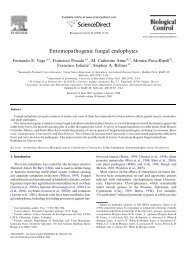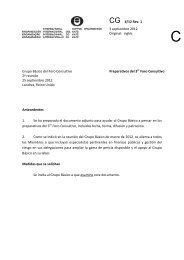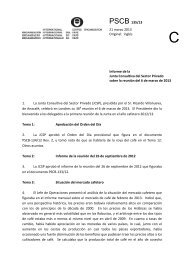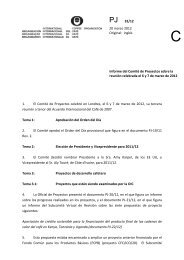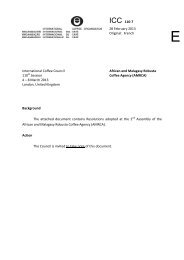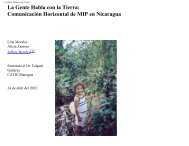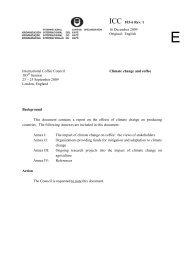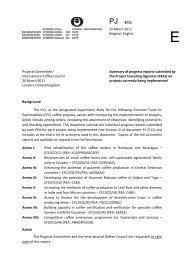Devouring profit - International Coffee Organization
Devouring profit - International Coffee Organization
Devouring profit - International Coffee Organization
You also want an ePaper? Increase the reach of your titles
YUMPU automatically turns print PDFs into web optimized ePapers that Google loves.
contribution by family member type to the total farm needs; these needs are about<br />
220 labour days per farm per year, including coffee harvest.<br />
On average a typical coffee farm needs to contract just 10% of the total labour needs<br />
in order to carry out all of the activities needed for crop management. If a typical<br />
family in the coffee sector were composed of about 10 members, according to the<br />
participation of different age groups, this family would have about 3.4 adults, 4.3<br />
children, 2 young persons and 0.3 elderly people. If we assume that there are 20 days<br />
of work per month per person, family labour can supply the labour needs to carry out<br />
the farm activities for 7 to 8 months per year. However in the harvesting period there<br />
is a labour deficit. This point should be taken into account when analysing CBB 28<br />
management and suggesting additional labour inputs.<br />
Farmer’s income: coffee farmers’ income is seasonal in Mexico, which is a risky<br />
situation especially if pickers become scarcer through emigration, as some farmers’<br />
fear. In order to minimise the effect of these seasonal variations, farmers can attempt<br />
to spread flows of labour and harvest production throughout the year. Upton (1996)<br />
points out that there are various strategies, such as diversification of agricultural production,<br />
to establish different on- and off- farm activities, storing food, seeds and<br />
animal fodder, etc. From experience in other countries, this situation also suggests that<br />
they would be especially risk-averse and perhaps unwilling to try new crops or varieties.<br />
Seasonal income means that money is scarce for labour at certain times, or that<br />
certain activities such as crop hygiene might be delayed because of other more urgent<br />
tasks. For instance we can take three of the production categories proposed by Moguel<br />
& Toledo (1996), subsistence, medium technology and intensive technology. These<br />
categories produce 5, 13 and 24 Quintals of green coffee/ha/year. If we assume an<br />
expected price in 2000 of about $650 Mexican pesos per quintal of parchment coffee 29 ,<br />
we can estimate the monthly income following the harvest distribution, as appears in<br />
Figure 20.<br />
Figure 20. Gross income distribution according to coffee productivity<br />
(S. Mexico) 30 .<br />
28 CBB = <strong>Coffee</strong> Berry Borer (Hypothenemus hampei)<br />
29 Expected price this year. Roberto Esquinea, Union Ejidos Lazaro Cardenas.<br />
Cacaohatan, September, 2000<br />
30 Mexican <strong>Coffee</strong> Council, 2000<br />
93




